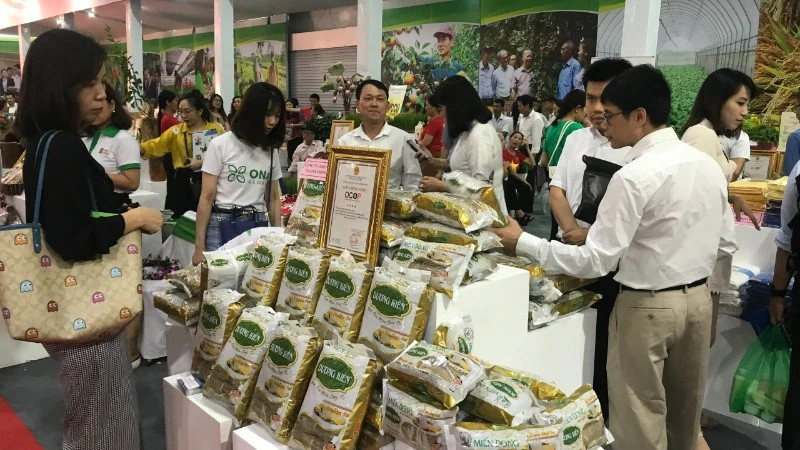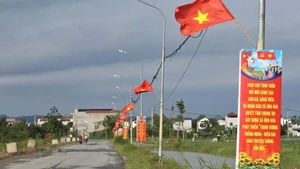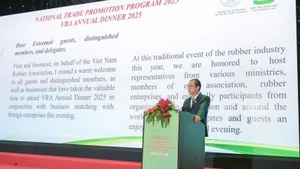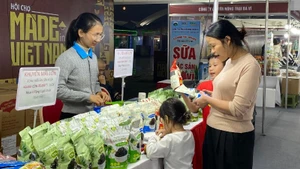These days, the people of Duong Lieu Commune, Hoai Duc District, Hanoi, are rushing to produce mien dong (canna vermicelli) to bring it to the market in time to serve the needs of consumers during Lunar New Year 2025.
Nguyen Thi Hanh, a resident of the mien dong craft village, shared that taking advantage of the dry season, her family increased their production time and tripled their capacity to serve orders.
Thanks to the application of science and technology in production, the vermicelli making stages have now been modernised. Vermicelli makers no longer have to make vermicelli by hand as they can now use machines, contributing to improving productivity and reducing product costs.
Hanh added that although the economy is still facing many difficulties this year, the price of vermicelli is higher than last year. Her family's vermicelli products are sold nationwide, bringing in a good income for the family.
Hanoi is known as the "land of hundreds of occupations" with 1,350 craft villages and villages with occupations, of which 334 craft villages, traditional occupations, and traditional craft villages have been recognised as titles in 25 districts, towns, and cities and belong to 6 out of 7 occupation groups nationwide.
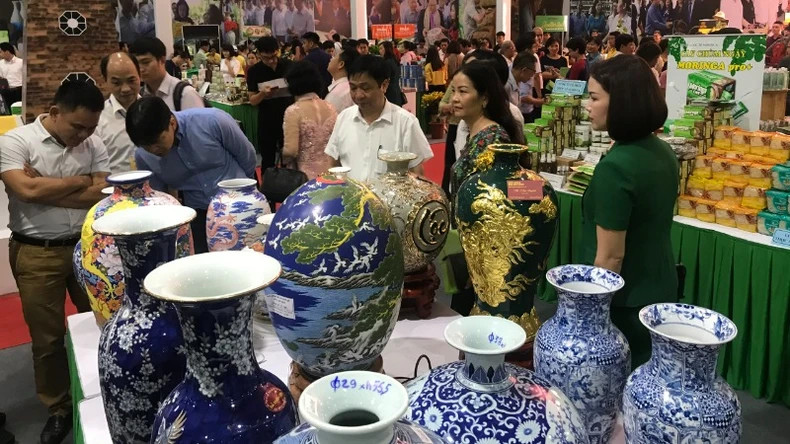 |
| Hanoi's OCOP products |
To develop craft villages, Hanoi has had many policies to encourage the development of rural occupations and craft villages, including the organisation of a dialogue conference to remove difficulties and promote production for enterprises, cooperatives, and production and business households operating in craft villages in the area.
Notably, in 2024, the city issued a master plan for developing craft villages in Hanoi for the 2024-2030 period, with a vision to 2050, creating favourable conditions for localities to expand production and improve people's lives.
According to a representative of the Hanoi Coordination Office of the New Rural Development Programme, craft villages contributed 745 products out of the total of more than 2,710 OCOP products.
Craft village products are diverse in types, beautiful in design, good in quality; some have competitive strengths in domestic and foreign markets, such as ceramic products, traditional weaving and embroidery, rattan and bamboo weaving, and agricultural and food processing.
By the end of 2023, the revenue of 327 recognised craft villages is estimated to have reached over 24,000 billion VND. Some craft villages with high revenue include: Son Dong fine art sculpture craft village at over 1,000 billion VND; La Phu confectionery and knitting craft village at over 1,300 billion VND; Minh Khai agricultural and food processing craft village at over 1,000 billion VND; Phung Xa mechanical craft village at 1,200 billion VND; Huu Bang village's carpentry-sewing craft village at nearly 1,000 billion VND; and Thiet Ung traditional fine art craft village at 1,100 billion VND.
Craft villages have contributed to creating jobs and increasing income for rural workers, with the average income of workers in craft villages reaching 84 million VND per year, contributing to promoting economic development in localities with craft villages.
To facilitate the development of craft villages, contributing to solving difficulties in the environment and production space for enterprises in some craft villages, the city has built many industrial clusters of craft villages concentrated far from residential areas. It is also implementing investment in the construction of 43 new industrial clusters, including 31 industrial clusters of craft villages.
Many craft villages develop tourism services, annually welcoming millions of domestic and foreign visitors to visit, experience and shop, such as Bat Trang Ceramics (Gia Lam District), Van Phuc Silk Weaving (Ha Dong District), and Hong Van Ornamental Plants (Thuong Tin District).
A representative of the Hanoi Department of Agriculture and Rural Development said that the development of traditional craft villages contributes significantly to improving the quality of life of rural people.
Building new-style rural areas and developing craft villages not only brings a new, civilised and modern look to rural areas but also comprehensively changes all aspects of people's lives, preserving and promoting the nation's fine traditional cultural values.
